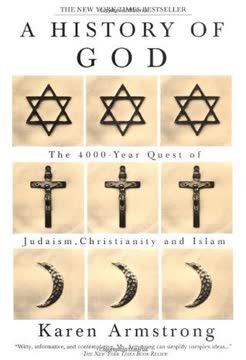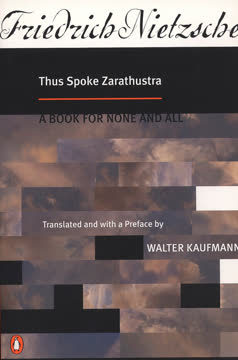Key Takeaways
1. The Integration of Science and Religion: A Pressing Challenge
There is arguably no more important and pressing topic than the relation of science and religion in the modern world.
The dilemma of our time. Science and religion, two of the most powerful forces shaping human understanding, have been locked in a centuries-old conflict. Science, with its empirical methods and material focus, has revolutionized our understanding of the physical world. Religion, on the other hand, remains the primary source of meaning and moral guidance for billions. This divide has created a fragmented worldview, leaving many struggling to reconcile scientific knowledge with spiritual beliefs.
The need for integration. The integration of science and religion is not merely an academic exercise. It is a crucial step towards addressing some of the most pressing issues of our time, including:
- Environmental crises
- Ethical dilemmas in technology and medicine
- The search for meaning in an increasingly materialistic world
- Social and cultural conflicts rooted in differing worldviews
The stakes are high. Failure to reconcile these two domains could lead to:
- Continued polarization of society
- Rejection of scientific advancements by religious communities
- Loss of moral and ethical guidance in scientific pursuits
- Persistent existential anxiety in individuals torn between faith and reason
2. Modernity's Differentiation: The Dignity and Disaster
Differentiation = dignity.
The dignity of modernity lies in its differentiation of the cultural value spheres: art, morals, and science. This separation allowed each domain to develop independently, free from the constraints of the others. The benefits of this differentiation include:
- Scientific progress unhindered by religious dogma
- Artistic expression liberated from moral censorship
- Ethical reasoning based on universal principles rather than tradition alone
The disaster of modernity occurred when differentiation led to dissociation. The value spheres didn't just separate; they fragmented, leading to:
- Scientific materialism dominating all aspects of life
- Loss of meaning and purpose in a purely mechanistic worldview
- Ethical relativism and moral confusion
- Artistic expression divorced from deeper spiritual insights
The challenge ahead is to preserve the benefits of differentiation while healing the wounds of dissociation. This requires a new framework that can integrate the insights of science, the meaning-making of religion, and the expressive power of art.
3. The Collapse of the Kosmos: Interiors Reduced to Exteriors
Gone are the actual signifieds—the actual interior domains of the I and the WE disclosed in their own terms—and what we have left, as with systems theory, are holistic chains of interwoven ITs, holistic surfaces, all utterly lacking any genuine depth whatsoever, and thus utterly incapable of curing the dissociations of modernity.
The flattening of reality. Modern scientific materialism reduced all of reality to observable, measurable phenomena. This led to:
- Consciousness viewed as merely brain activity
- Values and ethics seen as social constructs without inherent meaning
- Spiritual experiences dismissed as neurological events
The loss of interiority. This reductionist view eliminated the rich interior dimensions of human experience:
- Subjective experiences (the "I")
- Intersubjective cultural meanings (the "We")
- Transcendent or spiritual realities
The consequences of this collapse are far-reaching:
- Existential despair and loss of meaning
- Difficulty in addressing complex human issues that involve interiority
- Inability to fully appreciate or investigate consciousness and spiritual experiences
4. Postmodernism: The Attempt to Deconstruct Science
There is nothing but sliding chains of signifiers: you see, the only reality is sliding chains of material marks—in other words, sliding chains of ITs.
The postmodern critique emerged as a reaction to the reductionism of scientific materialism. Key aspects include:
- Rejection of grand narratives and universal truths
- Emphasis on interpretation and context-dependency of knowledge
- Deconstruction of power structures embedded in knowledge claims
The valuable insights of postmodernism include:
- Recognition of cultural and historical biases in knowledge production
- Awareness of the role of language and interpretation in shaping reality
- Critique of simplistic notions of objectivity
The pitfalls of extreme postmodernism:
- Relativism that undermines the possibility of any stable knowledge
- Denial of objective reality, leading to confusion and inaction
- Inability to provide a constructive alternative to scientific materialism
5. The Three Strands of Valid Knowledge: A Universal Method
Here are what I believe are three of the essential aspects of scientific inquiry—what I will also call the "three strands of all valid knowing": 1. Instrumental injunction. 2. Direct apprehension. 3. Communal confirmation (or rejection).
A universal epistemology. This three-strand approach provides a method for validating knowledge across all domains, including science, philosophy, and spirituality:
- Instrumental injunction: Follow a specific practice or method
- Direct apprehension: Observe and experience the results
- Communal confirmation: Verify findings with others who have completed the same process
Applications across domains:
- In science: Conduct experiments, gather data, peer review
- In philosophy: Engage in logical analysis, thought experiments, scholarly debate
- In spirituality: Practice meditation, experience altered states, compare with established traditions
The power of this approach lies in its ability to:
- Bridge the gap between objective and subjective knowledge
- Provide a common ground for dialogue between different disciplines
- Offer a way to validate spiritual experiences without reducing them to material phenomena
6. The Four Quadrants: A Comprehensive View of Reality
All of these quadrants—and equally important—quadrants can be brought together under one roof using the core methodology of deep empiricism and deep science (the three strands of all valid knowledge].
A holistic framework. The four quadrants represent different aspects of reality:
- Upper-Left (Interior-Individual): Subjective experiences, intentions, consciousness
- Upper-Right (Exterior-Individual): Objective behaviors, brain states, physical manifestations
- Lower-Left (Interior-Collective): Intersubjective cultural meanings, values, worldviews
- Lower-Right (Exterior-Collective): Interobjective social systems, ecosystems, technological networks
The power of integration. This model allows us to:
- Recognize the validity and importance of all quadrants
- Understand how different aspects of reality interact and influence each other
- Avoid reductionism by acknowledging both interior and exterior dimensions
Practical applications of the four-quadrant model:
- In psychology: Addressing both subjective experiences and observable behaviors
- In social sciences: Examining cultural values and social structures simultaneously
- In spirituality: Integrating personal experiences with communal practices and beliefs
7. The Great Chain of Being: Reconciling Ancient Wisdom with Modern Science
This is fascinating. The deep sciences of the Upper-Left quadrant (from modern developmental psychology to the contemplative sciences) converge on the traditional Great Chain of Being, exactly as disclosed in the core of the premodern religions.
Ancient wisdom validated. Modern developmental psychology and transpersonal studies have discovered stages of human development that closely mirror the ancient concept of the Great Chain of Being:
- Body (sensorimotor stage)
- Mind (conceptual and rational stages)
- Soul (subtle or psychic stages)
- Spirit (causal and nondual stages)
A new synthesis. This convergence allows us to:
- Recognize the validity of ancient spiritual insights
- Integrate these insights with modern scientific understanding
- Develop a more comprehensive model of human development and potential
Implications for integration:
- Spiritual experiences can be studied scientifically without reducing them to mere brain states
- Developmental psychology can inform spiritual practices and vice versa
- A more nuanced understanding of human nature and potential emerges
8. Levels and Dimensions: A Multifaceted Approach to Integration
Using the three strands of all valid knowledge (paradigm, experience, falsifiability), we were able to suggest a way to integrate the four quadrants with the traditional Great Holarchy of Being.
A comprehensive model. This approach combines:
- Vertical levels: The stages of development from the Great Chain of Being
- Horizontal dimensions: The four quadrants at each level
The power of this framework:
- Recognizes both hierarchical development and the equal importance of different aspects of reality
- Allows for a more nuanced understanding of human growth and potential
- Provides a way to integrate scientific, philosophical, and spiritual insights
Practical applications:
- In education: Designing curricula that address all aspects of human development
- In therapy: Addressing psychological issues at multiple levels and from multiple perspectives
- In social policy: Creating holistic approaches that consider individual, cultural, and systemic factors
9. Art, Morals, and Science: Expressions of the Great Holarchy
Art, then, is one of the important dimensions of every level in the Great Holarchy of Being. Art is the Beauty of Spirit as it expresses itself on each and every level of its own manifestation.
A holistic view of human endeavors. This approach recognizes that art, morals, and science exist at each level of the Great Holarchy:
- Sensorimotor: Representational art, basic ethical rules, empirical science
- Mental: Conceptual art, conventional morality, rational philosophy
- Subtle: Visionary art, universal ethics, transpersonal psychology
- Causal/Nondual: Non-representational art, mystical ethics, contemplative science
The power of integration:
- Recognizes the validity and importance of each domain at every level
- Allows for a more nuanced appreciation of human culture and creativity
- Provides a framework for understanding how these domains evolve and interact
Practical implications:
- In education: Developing curricula that nurture artistic, moral, and scientific growth at all levels
- In cultural studies: Analyzing societies through multiple lenses (artistic, ethical, scientific) at various stages of development
- In personal growth: Encouraging balanced development across all domains and levels
Last updated:
Review Summary
The Marriage of Sense and Soul receives mostly positive reviews, praised for its attempt to integrate science and religion. Readers appreciate Wilber's intellectual depth and systematic approach, though some find it repetitive or overly academic. The book is seen as thought-provoking and paradigm-shifting, offering a unique perspective on reconciling scientific and spiritual worldviews. Critics note that Wilber's arguments can be contrived or dogmatic at times. Overall, it's recommended for those interested in exploring the intersection of science, religion, and philosophy.
Similar Books
Download PDF
Download EPUB
.epub digital book format is ideal for reading ebooks on phones, tablets, and e-readers.




















